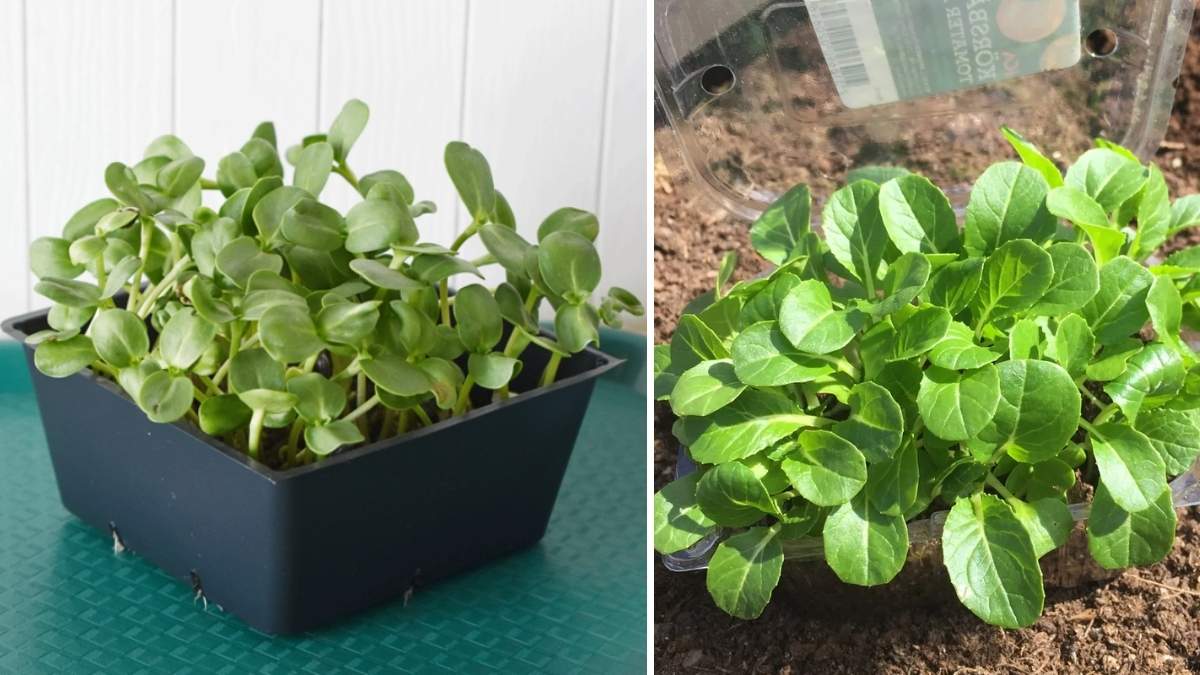Sunflower shoots, also known as sunflower microgreens, are tiny, tender plants packed with flavor and nutrition. They are rich in vitamins A, C, and E, as well as minerals like magnesium, calcium, and potassium. These shoots are perfect for adding a fresh, nutty taste to salads, sandwiches, smoothies, and even stir-fries. Growing sunflower shoots at home is easy, fast, and requires minimal space, making them ideal for beginners and experienced gardeners alike. This guide will walk you through the steps to grow healthy, flavorful sunflower shoots while maximizing their nutritional value.
Why Grow Sunflower Shoots
Sunflower shoots are more than just a tasty addition to meals. They are nutritional powerhouses, containing higher concentrations of vitamins and minerals than mature sunflower seeds. They are also loaded with antioxidants, which help fight free radicals and support overall health. Growing sunflower shoots at home ensures that they are free from pesticides and chemicals, making them a clean and organic source of nutrition. Additionally, they grow quickly, typically ready to harvest in just 7 to 10 days, so you can enjoy fresh greens almost immediately.
Choosing the Right Seeds
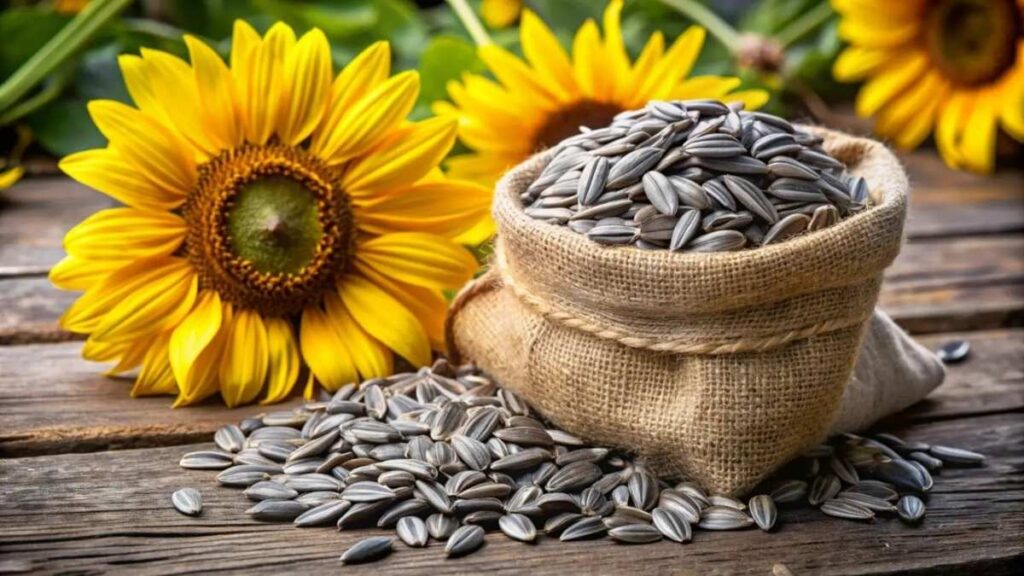
The first step in growing sunflower shoots is selecting high-quality seeds. Not all sunflower seeds are suitable for sprouting. Look for seeds labeled specifically as “sprouting seeds” or “microgreen seeds,” which are untreated and free from chemicals. Organic seeds are ideal because they are non-GMO and free from synthetic coatings.
You can choose between black oil sunflower seeds and larger striped sunflower seeds. Black oil seeds are smaller, sprout faster, and produce tender shoots, while larger seeds may take slightly longer but often yield more robust microgreens.
Preparing the Seeds

Before planting, sunflower seeds need to be soaked to kickstart the germination process. Soaking helps soften the seed coat and encourages faster growth.
Steps for soaking seeds:
- Measure the amount of seeds you want to grow. A tablespoon of seeds is usually enough for a small tray.
- Place the seeds in a bowl and cover them with water.
- Soak the seeds for 8 to 12 hours or overnight.
- Drain and rinse the seeds thoroughly.
After soaking, the seeds are ready to be spread on your growing medium.
Choosing the Right Growing Medium
Sunflower shoots grow best in a nutrient-rich and well-draining medium. You can use soil, coco coir, or a seed-starting mix. If using soil, make sure it is light and fluffy to allow roots to penetrate easily. Avoid heavy garden soil that can retain too much water and cause the seeds to rot.
For soil planting, fill a shallow tray about one inch deep with your chosen medium. Level it gently and moisten it slightly before adding the seeds. This ensures even contact between the seeds and the soil, promoting uniform germination.
Planting Sunflower Seeds
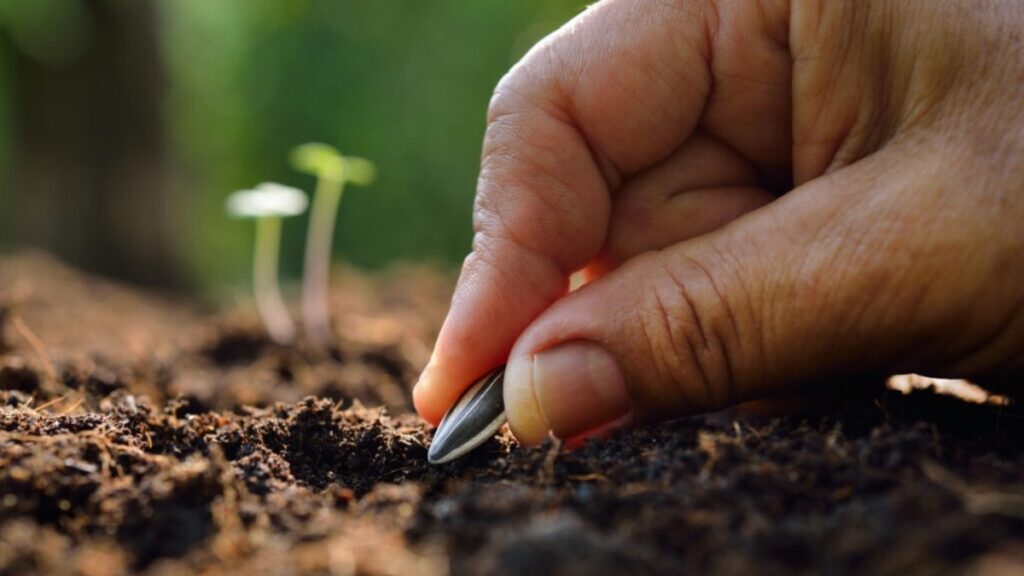
Planting sunflower seeds for shoots is simple and does not require deep soil.
Steps for planting:
- Spread the soaked seeds evenly across the surface of the moist soil or growing medium.
- Press them lightly into the medium without burying them too deep.
- Cover the seeds with a thin layer of soil or leave them uncovered depending on your preference. Uncovered seeds often sprout faster.
- Mist the seeds gently with water to keep them moist but not soaked.
Space is not a major concern, as sunflower shoots are harvested when young, but avoid overcrowding to allow proper airflow and prevent mold growth.
Providing Proper Light and Temperature
Sunflower shoots need indirect sunlight or bright artificial light for optimal growth. A sunny windowsill or a spot under fluorescent lights works well. Direct sunlight can sometimes dry out the shoots too quickly, so a location with filtered light is ideal.
The ideal temperature for sunflower shoots is between 65°F and 75°F. Cooler temperatures may slow germination, while excessively high temperatures can dry out the seedlings and reduce flavor.
Watering and Care
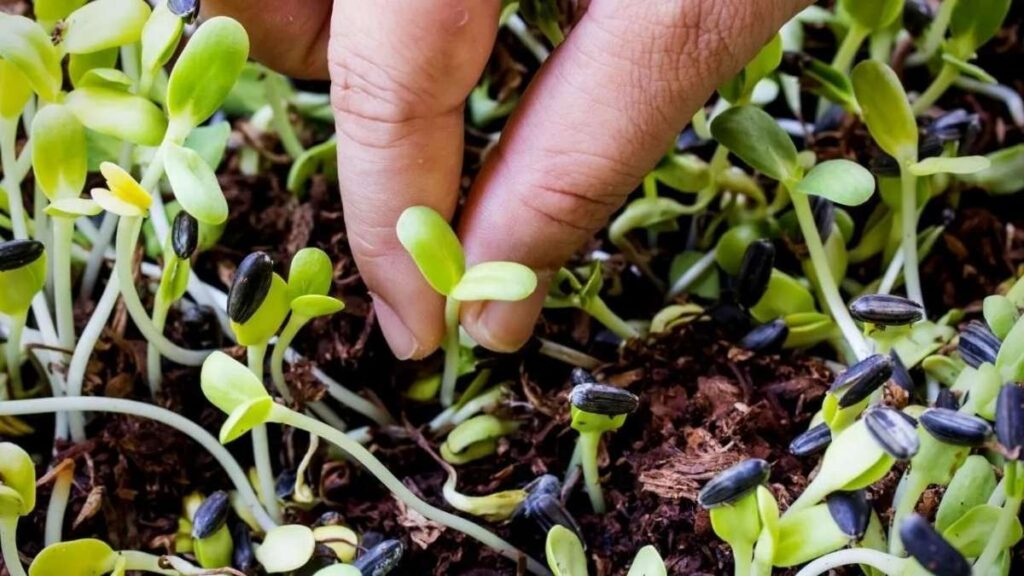
Consistent moisture is key to healthy sunflower shoots. Overwatering can lead to mold or root rot, while underwatering can cause the shoots to become tough and bitter.
Watering tips:
- Mist the seeds and shoots twice a day using a spray bottle.
- Ensure the soil or growing medium remains evenly moist but not soggy.
- Drain any excess water from trays to prevent standing water.
Good airflow is also important. Avoid placing trays in confined, humid spaces to reduce the risk of mold growth.
Harvesting Sunflower Shoots
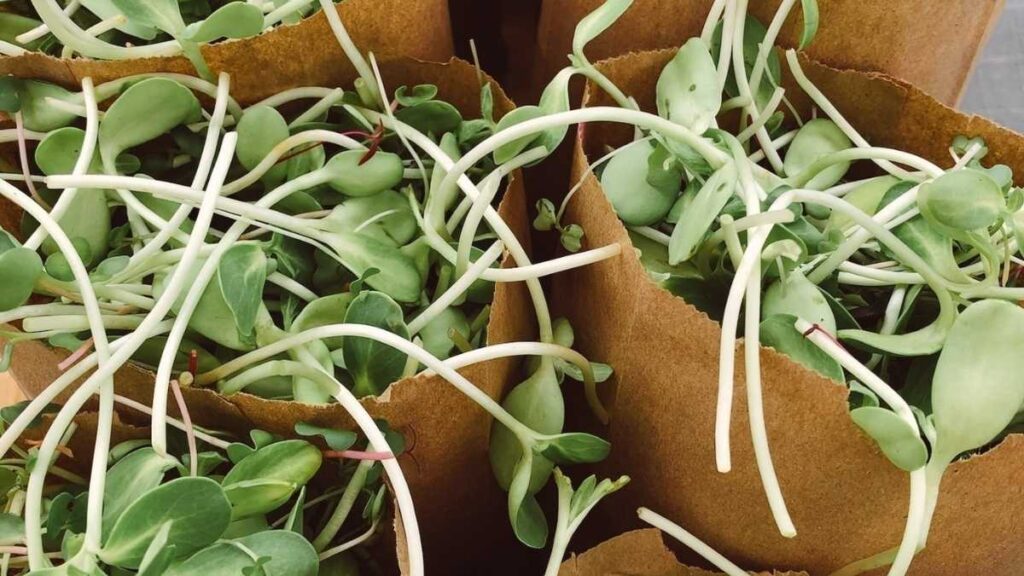
Sunflower shoots are typically ready to harvest in 7 to 10 days after planting, once they reach 2 to 4 inches in height and have developed their first set of true leaves. Harvesting at the right time ensures maximum nutrition and tenderness.
Harvesting steps:
- Use clean scissors or a sharp knife to cut the shoots just above the soil line.
- Rinse the shoots gently to remove any soil or debris.
- Pat them dry with a paper towel before storing or using.
Freshly harvested shoots are tender and flavorful. You can enjoy them immediately in salads, sandwiches, smoothies, or as garnishes.
Maximizing Nutrition and Flavor
To get the most nutritional value from your sunflower shoots, follow these tips:
- Harvest early, when the shoots are small and tender, as nutrient concentration is highest at this stage.
- Avoid letting shoots grow too tall or develop flowers, as this reduces flavor and tenderness.
- Store harvested shoots in the refrigerator for up to 5 days in a sealed container to maintain freshness.
- Grow multiple batches in succession to ensure a continuous supply of fresh microgreens.
Common Issues and Solutions
Even though sunflower shoots are easy to grow, some issues can arise.
- Mold: Caused by excessive moisture and poor airflow. Reduce watering slightly and improve ventilation.
- Leggy growth: Occurs when seedlings do not get enough light. Move trays closer to a light source or use grow lights.
- Bitter taste: Can happen if the shoots are allowed to grow too long or if they dry out. Harvest promptly and maintain consistent moisture.
Conclusion
Growing sunflower shoots at home is an easy, rewarding way to add fresh, nutrient-packed greens to your diet. With the right seeds, proper soaking, a suitable growing medium, and consistent care, you can enjoy tender shoots full of flavor and health benefits in just a week or two. They are perfect for small spaces, require minimal effort, and provide a constant source of nutrition when grown in succession. By following these steps, you can harvest sunflower shoots that are both delicious and rich in vitamins and minerals, bringing health and freshness straight from your home garden to your table.

